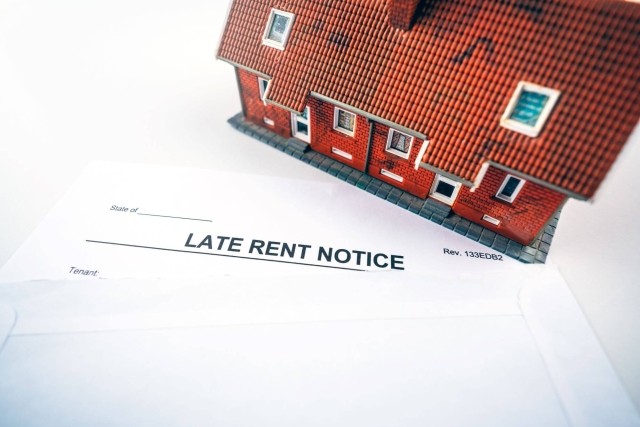As a landlord, it's crucial to mitigate the risk of tenants not paying or causing damage to your property. One effective way to reduce this risk is by charging a security deposit. In this guide, we will cover the rules and best practices surrounding security deposits in the rental business. We'll delve into what security deposits are, how they work, and provide guidance on determining the appropriate amount to charge. By following these guidelines, you can ensure a smoother and more secure rental experience.
In this article:
- What Is a Security Deposit?
- How Much Should You Charge for a Security Deposit?
- How Do Security Deposits Work?
- Returning the Security Deposit
- What Happens If Your Tenant Breaks the Lease?
- What Happens If Your Tenant Damages the Property or Leaves Rent Unpaid?
- After the Move-Out Inspection
What Is a Security Deposit?
A security deposit is a payment a renter makes to a landlord or property management company before moving into an apartment or house. The security deposit covers the costs for repairing potential damage from renters, like stains on carpeting. Some landlords also collect additional deposits for pets to account for the possibility of pet-related damage or additional cleaning required. It is important for your lease agreement to specify the amount and purpose of the security deposit. When the lease ends, consider sending the tenant a Security Deposit Return Letter to document the returned deposit. If you decide to withhold any portion of the deposit, you are generally required by law to notify the tenant of the charges within a specific timeframe, which may vary depending on the state or local jurisdiction.
How Much Should You Charge for a Security Deposit?
On average, the cost of a security deposit is equal to one month’s rent, but landlords often charge up to three months’ rent. If other rentals in the area charge around the same amount, it will be in your best interest to follow suit to give you a better chance of leasing your rental. However, the cost of a security deposit depends upon state laws, the cost of rent, amenities included with the property (for example, furnished vs. unfurnished), the type and size of the rental, and the market rate (competitors in the area). Your local and state laws may limit how much you can charge for a security deposit, so it’s important to do your research before you set the cost. Even if your state doesn’t have a limit, be careful when determining the cost of your security deposit. If it’s too high, you may have difficulty finding a tenant.
However, a landlord or property manager can set the deposit much lower depending on the circumstances. For example, if a tenant has great credit and employment history, a landlord may charge them as little as $100 for a security deposit. If a tenant does not meet the criteria to rent, a landlord may require a security deposit equal to one month’s rent, as well as the first (and potentially last) month’s rent upfront before moving in. It’s entirely dependent upon the landlord and state laws.
How Do Security Deposits Work?
It’s standard to collect a tenant’s security deposit and other move-in fees, including pet fees, administrative fees, etc., prior to move-in. This can either be at the lease signing, on move-in day, or any day between the two. Deposits should not be paid in cash but rather be paid online or by card or personal check so that the transaction can be tracked. When managing your tenants’ security deposits, it’s important to keep those funds separate from your personal accounts. When a tenant provides you with a security deposit, it’s your responsibility as the landlord or property manager to keep it safe.
If a tenant chooses to renew their lease at the end of their current lease term, the security deposit and other move-in fees should roll over. This means that you should not charge the tenant with a new security deposit or move-in fee(s). If your tenant chooses to move out, you will inspect your property after they’ve moved out (or with the tenant on their lease end date or another scheduled date) and determine if you will return the security deposit in full or keep a portion of the deposit to cover damages. However, tenants re-signing (or renewing) their lease is a win for all parties, so it’s important to learn how to retain your tenants.
Returning the Security Deposit
Returning the security deposit to a tenant can be tricky, so it’s important to follow best practices on the matter. Keep in mind that you can only deduct money from the security deposit if the tenant owes you past due rent or fees or if they caused damage beyond normal wear and tear. The process will differ not only based on state laws, but on the situation.
To avoid disputes between you and a tenant, consider tracking your expenses with Apartments.com. With our expense tracking platform, you can summarize rental expenses, including maintenance and repairs, then easily export them to CSV or PDF formats. Keeping receipts of both routine and unforeseen expenses can help you stay organized and minimize any disagreements regarding security deposit deductions.
What Happens If Your Tenant Breaks the Lease?
Tenants sometimes find that they need to move out of their rental before their lease is up. It happens, but it also comes with consequences for both landlord and tenant. As the landlord, you’ll have to find a new tenant earlier than expected. For tenants, they will likely lose their security deposit and have to pay additional fees for breaking the lease early, such as one- or two-months’ additional rent. How much you charge for breaking the lease is up to you (and your local laws).
What Happens If Your Tenant Damages the Property or Leaves Rent Unpaid
Property damage or unpaid rent are major issues to deal with after a tenant moves out. Your next step will be to make a list of every item that needs repairing and the cost of each repair (estimated by your maintenance team, contractor, etc.) to send to the tenant, along with the security deposit return letter. This letter will go into detail about how much of the security deposit you will be returning (if anything) and why. If the security deposit doesn’t cover the damage or unpaid rent, you will want to take next steps, which include communicating with your tenant, sending a demand letter, and considering going to small claims court.
After the Move-Out Inspection
When you’re completing the move-out inspection, be aware that normal wear and tear is to be expected and should not be considered property damage. Normal wear and tear, such as small nail holes, faded carpet, or worn enamel in sinks, should not be withheld from the security deposit by the landlord or property manager. If the move-out inspection goes well and there’s no sign of any property damage, as well as no rent left unpaid, then you should be set to return the security deposit back to the tenant in full. The security deposit, in the form of a check, should be accompanied by a security deposit return letter.
If there were a few issues with the rental, but there was nothing major, then you should send a security deposit return letter explaining the amount that was taken from the deposit and what it covered (for example, $60 subtracted for broken shelving in the kitchen).
When returning the security deposit or sending an itemized security deposit deduction form, know that each state has its own deadline, but it should be done in a timely manner regardless. Remember that how much you charge for your security deposit is your choice, but it’s important to consult with your attorney about state laws and competitors’ pricing in your rental market before you decide. How much you charge for the security deposit can also depend on a tenant’s background check, particularly their credit score.











